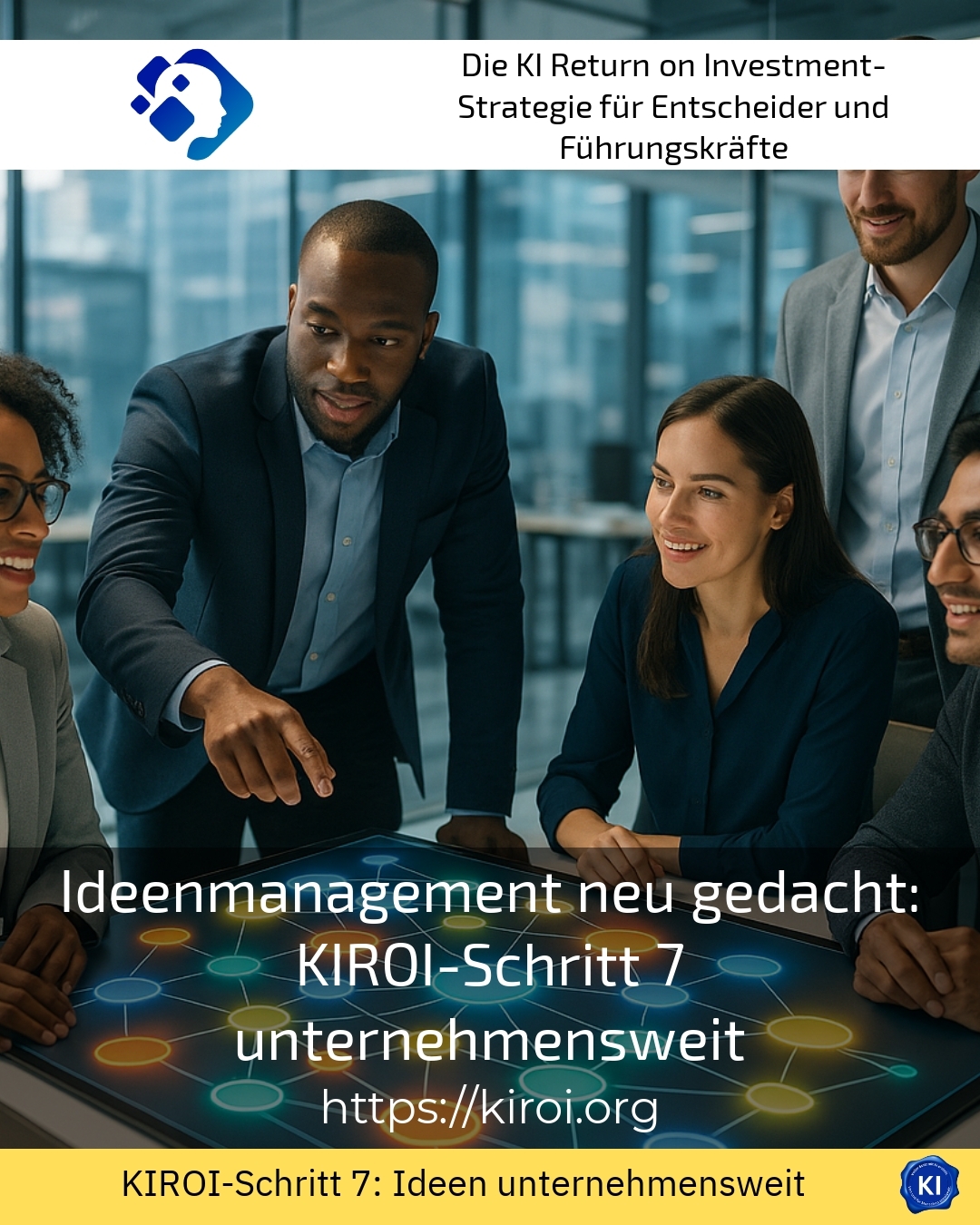In many companies today, idea management is no longer seen as a one-off action. Instead, it is becoming increasingly important as a continuous process. Creative impulses are systematically recorded, evaluated and implemented. KIROI step 7 in particular shows how ideas management can be organised effectively throughout the company. This is not just about collecting suggestions, but about holistic support that actively involves all employees.
Idea management as a driving force for innovation
Modern companies rely on idea management to increase their innovative strength. The active involvement of all employees is crucial here. In practice, moderated workshops have been shown to significantly shorten development loops in the mechanical engineering industry. This promotes the transfer of knowledge between specialised departments and accelerates the implementation of complex innovations.
Teams in software development also benefit from structured idea management. Joint retrospectives and feedback loops improve collaboration and lead to faster adjustments. In retail, digital suggestion platforms ensure transparent documentation and an efficient exchange between locations.
Many clients report that targeted impulses and practical methods help to realise the full potential of the ideas submitted. Coaching helps organisations to identify and overcome obstacles at an early stage. This not only supports the acceptance of proposals, but also promotes their successful realisation.
Scaling idea management company-wide
Digital platforms as drivers
Digital platforms create space for open communication. In software development, they promote continuous dialogue and accelerate the implementation of customer requests. In retail, they make it possible to document and manage suggestions transparently. In industrial production, automated workflows ensure that submitted ideas can be checked and implemented quickly.
Workshops and feedback cycles
Moderated workshops strengthen interdisciplinary dialogue. In the mechanical engineering industry, they shorten development loops and accelerate innovation. In software development, they lead to faster customisation and better product features. In retail, they promote dialogue between locations and ensure that suggestions are implemented efficiently.
Transparency and communication
A transparent feedback and communication process facilitates direct dialogue between employees from different departments. This helps to break down barriers to the realisation of innovative approaches. In practice, this has been shown to improve collaboration and accelerate the implementation of innovations in the mechanical engineering industry. In software development, it increases the quality and reaction speed of new features. In retail, it strengthens communication between shops.
BEST PRACTICE with one customer (name hidden due to NDA contract) In an industrial manufacturing company, KIROI Step 7 was used to specifically identify obstacles to the realisation of ideas and remove them by means of workshops. The pace of innovation visibly accelerated and company-wide collaboration between different departments intensified in the long term. The measures led to a stronger culture of innovation and sustainable growth.
Idea management as a continuous companion
Today, idea management means much more than simply collecting suggestions. It is a continuous support process that promotes creativity, recognises obstacles and supports teams with targeted impulses. KIROI Step 7 focuses on the company-wide dissemination and implementation of ideas. This involves establishing a transparent feedback and communication process that facilitates direct exchange between employees from different departments and thus breaks down barriers to the realisation of innovative approaches.
In the mechanical engineering industry, moderated workshops and structured feedback cycles significantly shorten development loops. This contributes significantly to the faster and better realisation of new product ideas. In software development, the active involvement of teams makes collaboration more dynamic, which increases the quality and reaction speed of new features. Retailers use digital platforms to document ideas transparently and strengthen internal communication between shops.
BEST PRACTICE with one customer (name hidden due to NDA contract) In a manufacturing company, KIROI Step 7 was used to develop a concept that systematically identified obstacles to implementation. Targeted workshops improved the transfer of knowledge between the specialist departments, which significantly increased the speed of innovation projects. The measures led to a stronger culture of innovation and sustainable growth.
My analysis
Effective idea management is crucial for a company's innovative strength. By applying KIROI Step 7 and similar approaches, organisations can optimise their processes and strengthen the motivation of their employees. Integration into all areas of the organisation and clear communication are particularly important. Idea management thus becomes a continuous companion that promotes creativity and brings about sustainable change.
Further links from the text above:
Idea management with KIROI: Step 7 for companies
Unleashing ideas management: KIROI step 7 company-wide
Rethinking ideas management: KIROI step 7 in the company
For more information and if you have any questions, please contact Contact us or read more blog posts on the topic Artificial intelligence here.















